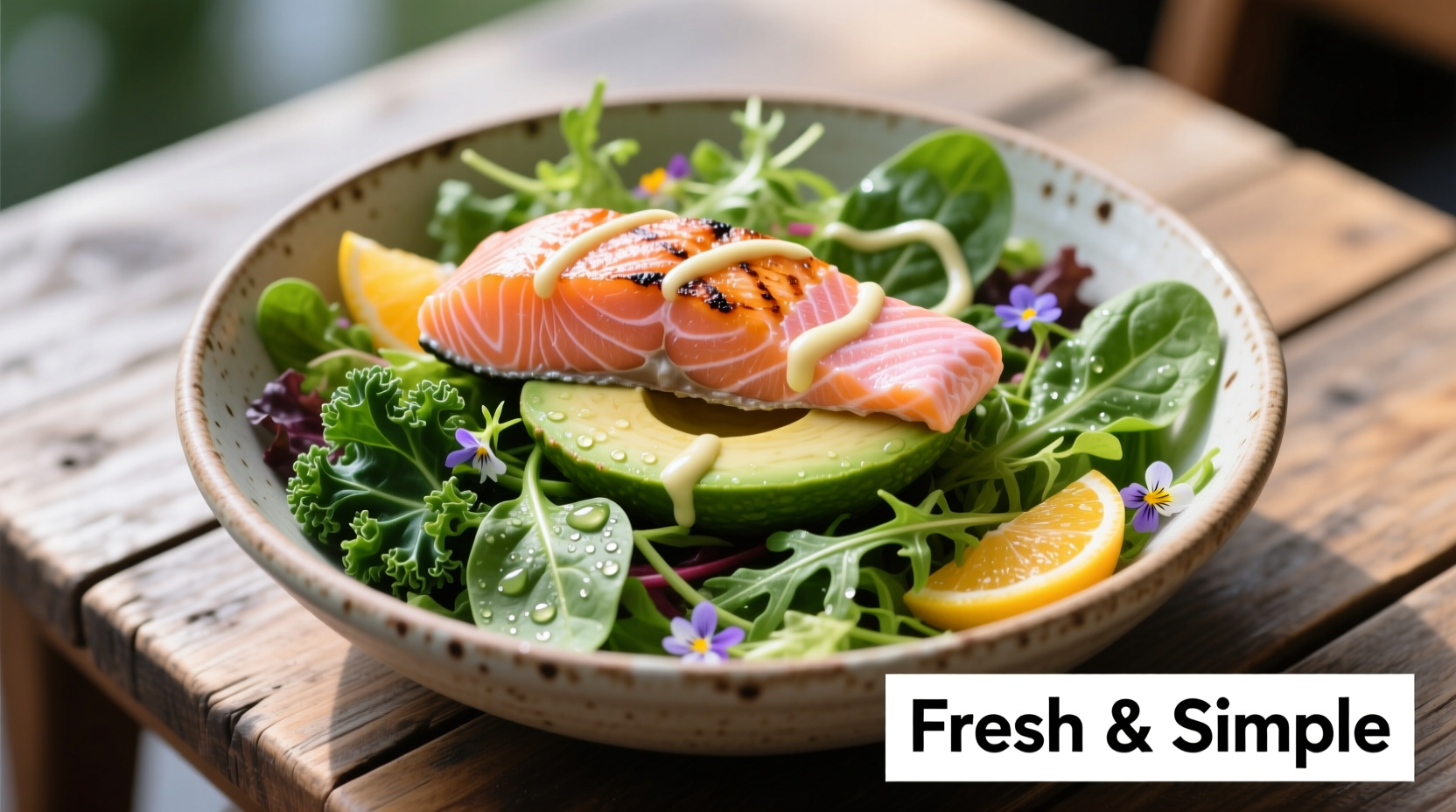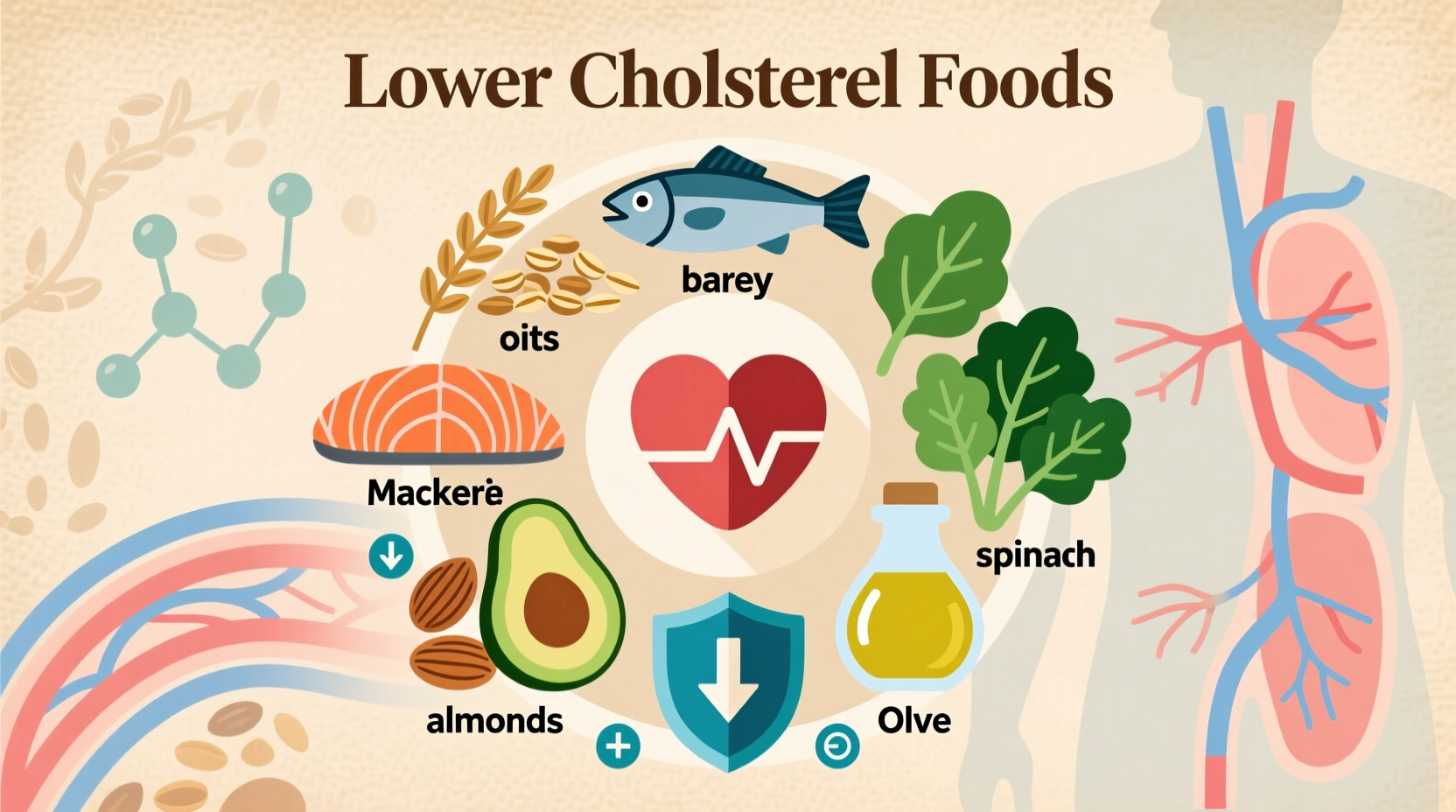High cholesterol affects nearly 94 million American adults, yet many don't realize simple dietary changes can significantly improve their numbers. Understanding which foods actively combat high cholesterol isn't just about adding "healthy" items to your plate—it's about strategically incorporating scientifically validated options that work through specific biological mechanisms.
How Cholesterol-Lowering Foods Actually Work
Before diving into specific foods, it's crucial to understand why certain foods impact cholesterol levels. Your body processes dietary cholesterol differently than saturated and trans fats, which actually have a more significant effect on blood cholesterol levels. The most effective cholesterol-lowering foods work through three primary mechanisms:
- Soluble fiber binds to cholesterol in the digestive system, preventing absorption
- Healthy fats (monounsaturated and polyunsaturated) replace harmful fats in your diet
- Plant sterols block cholesterol absorption at the cellular level
According to research published in the American Journal of Clinical Nutrition, consistently implementing these dietary strategies can lower LDL ("bad") cholesterol by 10-15% within 6-8 weeks—comparable to some prescription medications at lower doses.
The Top Evidence-Based Cholesterol Fighters
Oats and Whole Grains: The Soluble Fiber Powerhouse
Oatmeal isn't just breakfast—it's medicine for your arteries. The beta-glucan in oats forms a gel-like substance in your gut that binds to cholesterol-rich bile acids, removing them from your body. The FDA has approved a health claim stating that 3 grams of oat beta-glucan daily can reduce heart disease risk.
| Fiber Source | Daily Amount Needed | LDL Reduction Potential |
|---|---|---|
| Oat bran or rolled oats | 1.5 cups cooked | 5-7% |
| Barley | 3/4 cup cooked | 4-6% |
| Psyllium husk | 10g (1 tbsp) | 7-9% |
For best results, choose minimally processed oats (steel-cut or rolled) rather than instant varieties with added sugars. A study from Harvard's T.H. Chan School of Public Health found that people who consumed whole grains daily had 15% lower LDL levels than those who rarely ate them (Harvard Nutrition Source).
Fatty Fish: Omega-3 Powerhouses

Fatty fish like salmon, mackerel, and herring deliver EPA and DHA omega-3 fatty acids that reduce triglycerides and improve overall cholesterol profiles. The American Heart Association recommends eating fatty fish at least twice weekly for heart health.
Research from the National Institutes of Health shows that consuming 2-3 servings of fatty fish weekly can lower triglycerides by 25-30% and modestly increase HDL ("good") cholesterol (American Heart Association Scientific Statement).
Nuts: The Crunchy Cholesterol Solution
Walnuts, almonds, and pistachios deliver heart-healthy monounsaturated fats, fiber, and plant sterols. A landmark study published in the Journal of the American College of Cardiology found that eating 1.5-2.4 ounces of nuts daily reduced LDL cholesterol by 7% on average.
Here's what makes nuts particularly effective:
- Walnuts contain alpha-linolenic acid (ALA), a plant-based omega-3
- Almonds provide calcium and vitamin E that protect blood vessels
- All nuts contain arginine that improves artery function
For maximum benefit, choose raw or dry-roasted varieties without added salt or sugar. The FDA has approved a qualified health claim for nuts stating: "Supportive but not conclusive research shows that eating 1.5 ounces per day of most nuts as part of a diet low in saturated fat and cholesterol may reduce the risk of heart disease."
Plant Sterol-Fortified Foods: The Targeted Approach
Foods fortified with plant sterols (margarines, orange juice, yogurts) can lower LDL by 7-10% when consumed as part of a heart-healthy diet. These compounds, naturally found in small amounts in plants, work by blocking cholesterol absorption in your digestive tract.
The National Cholesterol Education Program recommends 2 grams of plant sterols daily for cholesterol management. However, it's important to note these fortified foods work best when consumed with meals and shouldn't replace whole food sources of nutrients.
Foods That Undermine Your Cholesterol Efforts
Even with the right cholesterol-lowering foods, certain dietary elements can sabotage your progress:
- Trans fats: Still found in some processed foods despite bans—check for "partially hydrogenated oils" on labels
- Excess saturated fats: More than 5-6% of daily calories from saturated fat can raise LDL
- Sugary beverages: High sugar intake increases triglycerides and lowers HDL
A 2023 analysis by the Centers for Disease Control and Prevention found that reducing trans fat intake by just 2% of total calories could prevent 1 in 5 heart attacks (CDC Heart Disease Risk Factors).
Putting It All Together: Your 7-Day Cholesterol-Lowering Plan
Implementing these foods consistently matters more than perfection. Here's a practical approach:
Morning Strategy
- Choose oatmeal with walnuts and berries instead of sugary cereals
- Add a tablespoon of ground flaxseed for extra fiber and omega-3s
Lunch Approach
- Include a side salad with avocado (healthy fats) and chickpeas (fiber)
- Choose olive oil-based dressings instead of creamy options
Dinner Framework
- Feature fatty fish twice weekly or plant-based protein the other days
- Replace white rice with barley or quinoa for added fiber
When Diet Alone Isn't Enough
While dietary changes can significantly impact cholesterol levels, they're not a universal solution. According to the American College of Cardiology, some people have genetic conditions like familial hypercholesterolemia that require medication regardless of diet.
Consult your healthcare provider if:
- Your LDL remains above 190 mg/dL despite 3 months of dietary changes
- You have existing heart disease or multiple risk factors
- You experience symptoms like chest pain or unusual fatigue
Remember: dietary changes work best as part of a comprehensive approach that includes regular exercise, maintaining a healthy weight, and avoiding smoking.











 浙公网安备
33010002000092号
浙公网安备
33010002000092号 浙B2-20120091-4
浙B2-20120091-4